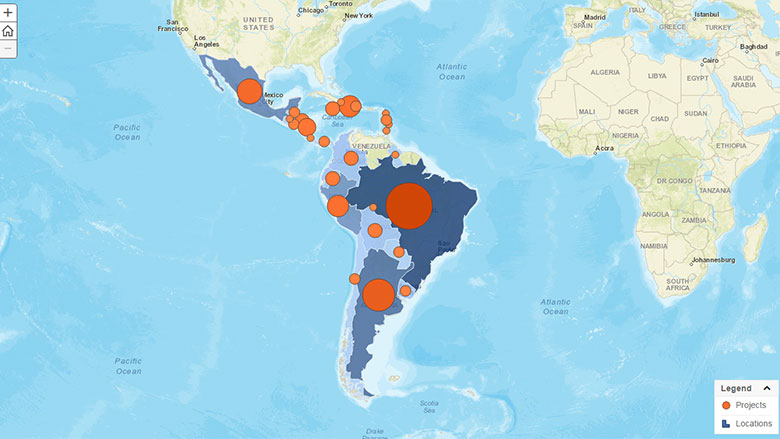Challenge
Glaciers in the tropical Andes of South America are a key aspect of the region’s water cycle. Scientific observations have shown that glaciers are retreating, at a higher rate since the 1970’s, with overwhelming evidence pointing to climate change as the main cause. Climate change-induced accelerated retreat results in alterations to the regional water cycle. These changes have impacted many critical sectors, such as water supply for human consumption, agriculture and hydro-electric generation. Moreover, impacts due to rainfall variability and glacial melt further degraded ecosystems, which in turn face reduced capacity to retain water and buffer runoff intensity. As a result, intense rainfall events were more likely to increase soil erosion and sedimentation rates and cause severe floods, glacial lake outbursts, or landslides. These challenges pose a major obstacle to the development of high-mountain areas in Bolivia, Ecuador and Peru.
Approach
Cutting-edge scientific knowledge was created through the application of the Earth Simulator, a Japanese super-computer that generates climate change scenarios and further estimates impacts in key sectors (high-mountain ecosystems, agriculture, and water). Subsequently, specific investments, targeted towards demonstrating and validating adaptation strategies, were carried out to: strengthen agricultural practices; improve irrigation infrastructure; reduce water losses for the water distribution system of large urban areas (such as La Paz and El Alto in Bolivia); increase the resilience of key glaciered basins with ecosystem restoration and conservation at high-altitude, and increase irrigation efficiency at low altitude. The capacity to better understand the glacier retreat phenomenon was also strengthened by installing eight glacier monitoring stations. Moreover, investment plans, integrated watershed management plans, and strategic development plans were informed by climate change considerations. This was a regional project, and key institutions of the participating countries met regularly to share experiences and knowledge.
Results
The project, implemented over a period of six years, generated climate change and glacier retreat scenarios; satellite images were purchased to describe historic glacier retreat; and all information generated was used to define or inform policy instruments. During this time, the project also designed and implemented adaptation investments:
- A supply and sanitation system for over 180 people in Ecuador was established, which helped remove anthropogenic stresses over the ecosystem. Complementary activities contributed to improved cattle ranching, ecological tourism and wild fire prevention.
- In Bolivia, the La Paz water utility worked to improve its water distribution efficiency through the installation of equipment and the implementation of an efficiency program, reducing water losses in El Alto’s District 4 from 39.6 percent overall losses down to 26.5 percent, with a total water loss reduction of approximately 619 m3/year. Efficient irrigation schemes were built in Bolivia and irrigation committees were formed and then trained in water efficiency practices. These committees helped enforce improved operational procedures, including sprinkler irrigation; improved canal lining; creating, formalizing, training for water users associations; the promotion of climate resilient crop varieties; and integrated crop-management activities. These activities helped 155 local families.
- In Junin, Peru, irrigation activities included strengthening irrigation committees, installing three sprinkler irrigation systems and the lining of an open canal, together with an intense capacity building and training component. The irrigation systems added 334 hectares of cultivation area and helped 526 local families.
